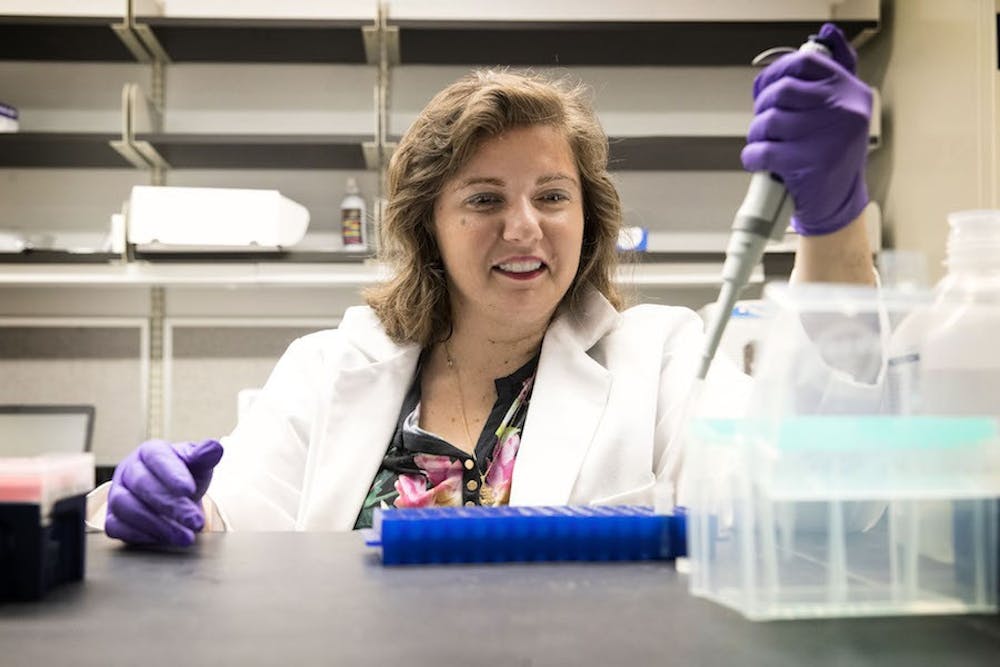A research team led by Pharmacology Asst. Prof. Irina Bochkis used a liver disease model to study age-associated diseases related to metabolism at the cellular level. The lab found that some diseases, including fatty liver disease, are caused by wrinkles in cells due to aging.
According to MedlinePlus, metabolic diseases disrupt the process of breaking down food, causing an abnormal amount of a substance in the body. Specifically, fatty liver disease results in the buildup of fat in the liver, the progression of which could lead to liver failure.
Bochkis’s lab is centered around studying the cellular processes affecting the development of medical conditions that upset the body’s conversion of food to energy. For the past three years, researchers in the lab have been working on the project involving age-related metabolic diseases.
“In particular, we apply experimental and computational methods to identify genetic and epigenetic mechanisms regulating metabolism,” Bochkis said in an email.
Class of 2018 alumna Marissa Patrick worked on the project that resulted in the finding of wrinkles in older cells. She was also a co-author on the paper published in “Aging Cell” that reported this result.
Patrick said the goals of the project were to elucidate the differences in metabolic regulation between young and old mice, model organisms likely representative of human conditions. In particular, they studied nuclear lamina and Foxa2 in the context of age-related metabolic diseases.
According to “Science Direct,” nuclear lamina is a network of proteins that line the inner surface of the nuclear envelope, the membrane surrounding the nucleus — or “the brain” — of a cell. Bochkis said the paper published in “Aging Cell” reports much evidence that regulating genetic material at the nuclear lamina is related to aging.
Foxa2, on the other hand, is a transcription factor — a protein that helps turn genes “on” and “off” depending on which cells they are needed in — that Bochkis previously found was more present in aged fatty livers.
According to Bochkis, her lab’s initial hypothesis was that nuclear lamina change with aging. She pursued the answer to this question by studying the genes involved in the lamina.
The lab used ChIP-sequencing, a method that studies the interactions between proteins and DNA, to look at the function of lamina and Foxa2. Patrick worked on analyzing the data from ChIP-sequencing using computational analysis. Specifically, Patrick used computer modeling to compare lamina binding between old and young mice.
“I did some computational analysis to identify how many [lamina] regions — and specifically which regions — were bound in each model and then from there you can elucidate whether there are genes that are in those regions and how that might play into metabolic disease development process,” Patrick said.
According to Bochkis’s paper, the lab found that with aging, a loss of nuclear lamina occurs, causing the nuclear membrane to lose shape and become wrinkly.
These changes are also linked to increased amounts of Foxa2. Higher levels of Foxa2, in turn, cause genes involved in the storage and synthesis of fat to be activated — leading to an accumulation of fat in the liver. These alterations in such genes, consequently, lead to fatty liver disease.
“We found that changes at the nuclear membrane with aging (dysmorphic/wrinkled nuclei) led to de-repression of genes that should be off in the liver, leading to metabolic disease (fatty liver),” Bochkis said.
Patrick said that identifying these factors that occur in the aging process has implications for treating metabolic diseases.
“That could now serve as a point of intervention in trying to address some of these metabolic diseases,” Patrick said.
Similarly, Bochkis also said that reversing this process involving nuclear lamina and Foxa2 could restore young and healthy tissue function.
Pharmacology Prof. Norbert Leitinger, who researches chronic inflammatory diseases, including fatty liver disease, said in an email that Bochkis’s research elucidated the way lamins affect lipid metabolism in aging cells. According to Leitinger, Bochkis’s research may be applicable to other types of cells and tissues that are affected by aging-related disease, in addition to fatty liver disease.
“In general, these finding may have important implications in identifying novel drug targets in aging-associated metabolic dysfunction,” Leitinger said.







